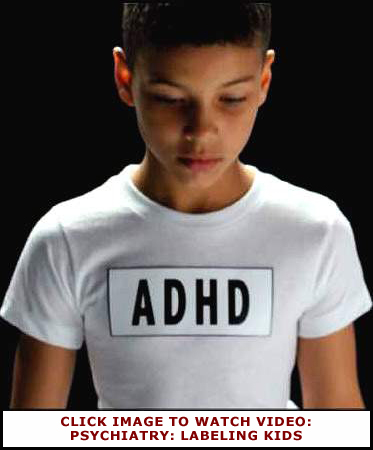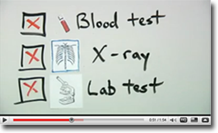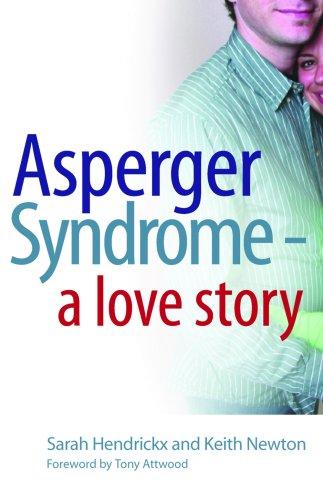Vivid Imagination
Picture thinkers have great—often wild—imaginations. They form
strong, vibrant mental pictures that are often on the move. They make
their own mind-movies as they read and listen. These mental movies can
include voice-overs, close-ups, split screens, or panoramic shots.
Anything they’ve ever seen on a screen they can imagine and use,
including a zoom-in to enlarge something, an overlay of two or more
images, transformation of one thing into another, rotation to see the
other side of something, cartoon animation, or a graphic they can enter
like a video game. They can organize information visually—laid out on an
inner computer screen—and then file it away mentally to pull out later
(handy for tests). Some picture thinkers may not know they have this
mental computer capacity—so hampered are they by trying to listen and
take notes at the same time (and then outline!). Picture Thinker’s
spatial imaginations can run away with them in great leaps from one
fantasy to another, but when under control, there is almost nothing they
cannot bring into play in the arena of their mind’s eye.
Visualization
Visualization takes imagination a step further. Picture thinkers are
wonderful visualizers, although some need to be taught this skill to
jumpstart it. Visualization is the most versatile tool in the picture
thinker tool kit. It can be applied in every subject area in school and
in life in general. Tapping into what you have visualized provides
immediate rich experience that can be examined whenever you want to . It
is the basis of a kind of mental organization and storage of
information, ideas, and their interconnections that is like a computer
and imitates a computer’s worldwide web potential.
There are two parts to visualization. There is the “cognitive scratch
pad” that is like your computer screen where you input what you see.
Then there is the long term storage of all the visuals that is like your
computer memory. Visualization is so important that we devote an entire
section of this book to the wonders of this tool. There we include
sample classroom activities that build visualization skills, and we show
how to use visualization in a wide variety of school situations. Here,
we are just want to emphasize how important it is as a visual-spatial
tool. Visualizing will work for all kinds of thinkers, but is home
territory for picture thinkers.
One point. Good visual memory is needed for successful visualization.
There are some picture thinkers, usually impatient ones, who never look
at anything long enough to make an image. They just play with
speed-of-light perceptions. These picture thinkers may need help to look
“just a few nano-seconds longer” to form a real memory. Once this trick
is learned, they will quickly pick up their innate visualization skills
and then will be off and running.
Seeing the Big Picture
Perhaps this goes back to hunter-gatherer days. Upon encountering
something new—a new subject, a new experience, some unknown
object—picture thinkers want to know right away what that thing is.
They want to get to the heart of it, what it IS. Once that need is
satisfied, they can sit back and learn about the details, all the bits
and pieces that part of the picture. To understand anything, they need
to get its big picture first, which is why they ask so many questions.
They are trying to hook this new thing to something that they already
know. This questioning can be a frustrating time for them. They can feel
stupid, impatient, upset, tense, as they “circle around something new,”
trying out various viewpoints. Because they are active learners, not
wanting to have ready-made explanations handed to them, they are hard to
teach. They insist in understanding it in their own way.
It is hard for picture thinkers to experience significance if only
parts are available to them without the essential whole. Remembering a
detail and then attaching another detail doesn’t work for them. They
must size the whole situation up and sort out what feels important to
understand for themselves what something is about, and to make the right
connections. Often they suddenly “see” the whole thing all at once,
with everything in its place. Aha!
3-D Mastery
Although they may be called picture thinkers, visual-spatial learners
are oriented to the dimension of space and see in 3D. Their world is
far more complex than the flat worksheets or textbook pages in a
classroom. Spatials often “see” ideas in a 3-dimensions like computer
animation with depth. They look through both real and imagined space to
see the whole of something and to check out the relationships and
connections. This creates “inner territory” to explore. Picture thinkers
can quickly scan all that their senses have taken in—seeing, hearing,
smelling, tasting, feeling, sensing—and mentally connect the dots that
spell out what is going on, or what the essence of something is We all
do this all the time to some extent. It is called “perception.” But
picture thinkers do it in spades. They take in 360 degrees of the space
that surrounds them, making their input enormously richer and at the
same time, more challenging to analyze. Having to pay attention a small
set of details (like periods at the end of sentences) can feel like
being pulled back from their normal range of awareness to a trivial
pursuit. That tiny part better be important, or they discard it to
return to scanning for significance.
Sometimes seen as having poor organization skills, picture thinkers
have their order. It centers around significance, an emotional response.
Rather than outline as step-by-step learners do, where main ideas stand
out like trees on the plain, spatials respond to feelings about
importance. If something strikes them as worthwhile, it becomes part of
their web of essentials, a mental map of things worth paying attention
to. Instead of outlines—so comfortable to the stepwise —a picture
thinker’s scheme of reality is more like a 3D star map. The various
stars and constellations stand out in different degrees of brightness,
all shining against the dark space surrounding them and all
interconnected in some way. Those connections are based on feelings and
sensed importance.
At times, picture thinkers not only see but feel their way through
concepts. They have kinesthetic input like those cyberspace reality
games that evoke muscle response to what players “experience.” These
spatials grope through space as if they could touch ideas and
possibilities to find what is there. Einstein, who could visualize
thought experiments, spoke of using “a kind of imagistic, kinesthetic
shorthand” in his thinking process. (He was groping for words, typical
of spatials when trying to explain themselves.) It seems he was trying
to express the visual-spatial experience of thinking, seeing in
imagination, and feeling muscular response to ideas. It is interesting
that he recognized this as like “shorthand”—very minute, partial
symbols, and tiny, nuanced muscle responses that could mark sensed
relationships and also hold them in memory for future use. Spatials’
shorthand is different!
Certainly not all picture thinkers are Einsteins, but this
explorative mode of operation is true for many of them, especially the
deep thinkers and long processors. (They are covering a lot of mental
territory and this takes time.) Thinking in 3-D mode means that all
sorts of connections can be made in any dimension. Quantum physics and
string theory would make us aware of more than 3 dimensions Spatials may
lead the way to extraordinary feats of inner space exploration, making
its complexity more approachable to us all, but that is another story.
Seeing Relationships
When spatials get the big picture, they see the whole of something
and how the parts fit together. The relationship of the parts to each
other and to the whole comes naturally to them. That is the way things
are. They often think about putting something together with something
else, like a cook trying out a new recipe. They wonder what that new
relationship might like—how each would affect the other. Rather than
sort things into categories, their most natural mode of thinking is to
consider various new combinations of parts and what the flavor of the
new relationship would be. Their ability to invent and explore goes
along with this curiosity about how something might affect something
else. For them, everything is interconnected and, of course, related.
They are very aware of personal relationships among people as well as
how things relate to one another. While they can become very good at
sorting into categories, this skill is secondary to that of recognizing
the balance of relationships.
Pattern Recognition
Scanning and the search for significance combine to produce a talent
for pattern recognition in picture thinkers. It is part of their
awareness of connections. If a pattern (recurring connection) exists,
they will see it. This means, for one thing, that they will learn math
facts better when made aware of the interconnecting number patterns than
through rote memorization. Playing games that use number patterns works
far better for these emotionally attuned learners than drilling, since
their memories don’t hold isolated, disconnected facts. Picture thinkers
immediately recognize patterns that are pointed out to them but really
excel in finding their own, often seeing connections among things that
are overlooked by others. Once pointed out, the connections make sense
to others who wonder why they never noticed that.
Out-of-Box Thinking
An important aspect in understanding picture thinkers is that they
need to think in their own way. They are uncomfortable with following
some one else’s line of thought, partly because such linear thinking is
not the way their minds operate. Sometimes they really just can’t follow
along step by step. They can take in each step but without that Big
Picture, the steps fade away. They don’t remember details well unless
those details vibrate with significance, are tagged with their own
feelings, or are part of as sudden gestalt. Picture thinkers blaze their
own thought trail. Most need processing time to put together their own
Big Picture. There seem to be no real steps in their thinking. Often
they have a sudden insight that “things go together like this!” Either
slowly or in a flash, a whole concept emerges, which may be brilliant or
flawed. Picture thinkers need help in proving (or discarding) their new
ideas. Trying them out is a good strategy in teaching them. If their
idea actually works in a variety of situations, then it has validity. If
not, it’s back to the spatial drawing board.
The tendency to originality can make teachers uncomfortable. Not only
does it throw off lesson plans, but there is often an uncomfortable
feeling that they are not doing their job, not teaching them. Shouldn’t
they be the ones to tell spatials what they should know? They aren’t
sure spatials have “got it right.” It is helpful to give spatials some
processing time and to let them work in their own way, while insisting
that they apply and test their ideas.
Radar Scanning
It is as if picture thinkers have radar out always scanning the
environment, taking in every little thing. They are alert for changes,
shifts in energy, or tones of voice in everything around them. They
easily notice if some little thing they saw yesterday is missing today.
They scan for signals that something is going to happen as well as for
the general feel of things. They absorb what’s going on, intensely
immersed in that experience. At school, if the lesson of the day can
enter into their experience, these emotional picture thinkers will take
it in and remember it forever. Otherwise, scanning makes picture
thinkers vulnerable to distractibility. Their attention may be captured
by all sorts of things. They can be equally aware of a bug bite on their
arm, the way the lights are humming, someone’s simmering anger three
rows away, or the relationship of a radius to its circumference.
Emotional Intensity
Picture thinkers live emotionally. They do not shut their feelings
away to examine later. Instead, their emotions enliven, interpret, and
underscore their experience all the time. Their emotions affect the way
they think. Moods intertwine with learning, which means that their
thinking can take off when they feel upbeat and confident. On the other
hand, if they are upset, confused, angry, or depressed, picture thinkers
may have difficulty learning much at all. It is as if their mind shuts
down then, not able to function until their feelings are more positive.
This may be why they try to liven things up with humor, games, tricks,
and drama. Positive vibes just help them to learn better. It follows
that picture thinkers will have days when they learn poorly, just as
they will have days of remarkable accomplishment. Those around need to
learn that variability is the name of the game..
Gamesmanship
Picture thinkers want life to be upbeat. They love humor, fun,
excitement, and challenge. They are affronted by dullness and drudgery
and will often sabotage a dreary atmosphere, creating excitement of some
sort. They were usually happy, cheerful, fun-loving bon vivants as
toddlers. Just as then, t hey have boundless curiosity, are natural
explorers, and delight in discovery and excitement. Positive feelings
are very important to them, partly because when they are down, they can
be so very down. Their desire to liven things up—often by playing the
clown or stirring up arguments—can be very annoying to a teacher with a
lesson to impart, but they are (mostly) not behaving this way to be
obstructive. They want life to be lively. Situations where games and
play are used to aid comprehension or solve problems draw out the best
in them. Teachers do well to make the most of picture thinkers’
creativity, out-of-the-box thinking, and solutions that seem to come
from nowhere. They add excitement and interest to learning.
In a classroom, hands-on participatory lessons work well for them—and
for step-by-step learners too. Simulation games, board games created by
students as part of a learning project, hands-on immersion learning
situations, contests, construction and designing, art, music, poetry,
skits, and dramatic enactment—all meet a deep need of picture thinkers
to work in a rich, colorful, and stimulating environment. They remember
their own experience best, so experiential lessons make their points
memorably. Enlivening activities such as these also spice up things for
step-by-step learners, who enjoy but won’t demand this kind of teaching.
It is just these lively, upbeat, dramatic personality qualities that
draw others to picture thinkers like a magnet. Life is more zestful
around them, and classrooms are more exciting.
Source: http://www.visualspatial.org/spatialstrengths.php by
Linda Kreger Silverman, Ph.D.










